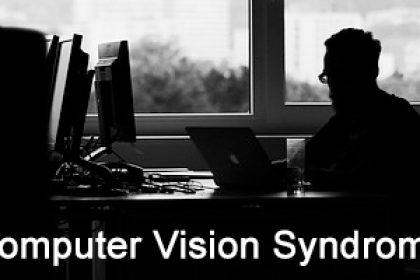
 With the average American spending 10+ hours a day plugged in, eye health is becoming an increasing concern in our nation. Recent studies show that between 50% and 90% of people who work at a computer screen exhibit at least some negative symptoms as a result.
With the average American spending 10+ hours a day plugged in, eye health is becoming an increasing concern in our nation. Recent studies show that between 50% and 90% of people who work at a computer screen exhibit at least some negative symptoms as a result.
TVs, Computers, Cell Phones, Tablets, and other screened devices have all become such integral parts of our professional and personal daily lives that many of us would not even consider living without them at this point… but the negative impact they can have on one’s well-being should not be ignored.
Understanding CSV – Computer Vision Syndrome
Computer Vision Syndrome isn’t one specific problem. Instead, it includes a whole range of eye problems including eye soreness, headaches, blurred vision, dry eyes, and neck and shoulder pain. Likewise, there is no one cause for these symptoms. While many people assume the issue is just THAT they are using their devices too much, experts have determined that many of these symptoms can be negated through better habits and understanding of where these issues are coming from. If you suffer from from the above issues, try following these helpful steps:
- Adjust your lighting: The high contrast between a bright screen and a darker room can create extra strain on your eyes. A well lit room allows your pupils to dilate to the appropriate level for your monitor’s light output, or if your device offers the option, make sure to enable low-light mode and/or blue light filtering whenever you are in a more poorly lite enviornment. This can save your battery life and your eyes.
- The 20-20-20 rule: When you are working (or playing) in front of a screen for extended periods of time, take regular breaks for your eyes. It’s not hard once you get into the habit. Every 20 minutes you spend looking at a screen, stop to look at something else that’s at least 20 feet away for at least 20 seconds. On a related note, this is not a bad time to get up and walk around, and just let all your other muscles limber up a bit as well.
- Purchase computer glasses They are like reading glasses specifically for computer screens.
- Reposition your monitor: Monitors should be positioned 20″-30″ away whereas TVs should typically be 8-12 feet away depending on the size of your screen. Also make sure that your eyes are on level with your screen. The neck strain and headaches associated with CSV often comes from poor posture resulting in prolonged periods of looking either up or down with your whole head.
- Break up and reduce your total screen time: If your job requires you to look at a computer for eight hours a day, don’t start playing computer games the minute you get home. Spend more time outdoors, and focus on more distant, real-world subjects.

